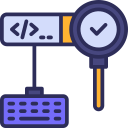Improving Audit Efficiency with Programming Skills
Mastering programming skills has become a game-changer in the auditing field, elevating the quality, speed, and scalability of audit processes. By integrating technology into traditional audit methodologies, professionals can analyze vast quantities of data more accurately and uncover insights that shape smarter business decisions. This guide explores how programming not only streamlines routine tasks but also empowers auditors to tackle complex challenges with innovative solutions, ensuring audits consistently meet the evolving demands of the modern business landscape.


Key Programming Languages for Auditors
Python is renowned for its readability, versatility, and a vast library ecosystem tailored for data analysis. Auditors can use Python to efficiently cleanse, aggregate, and analyze massive data sets. Moreover, it allows for easy integration with databases and visualization tools, transforming raw data into actionable insights. Python’s automation capabilities also mean that repetitive data tests or validations can be encoded once and executed repeatedly, ensuring consistency and saving time.

Programming automates the complex task of gathering data from multiple sources, including legacy systems and cloud platforms. Auditors can write scripts to pull relevant information efficiently and consistently, which minimizes manual intervention and reduces errors. Automated extraction ensures that data is always up-to-date and tailored precisely to each audit request, enhancing overall project delivery timelines.


Enhancing Risk Assessment and Detection
Traditionally, risk detection occurred at fixed intervals or after-the-fact. Programming allows auditors to create scripts that monitor data streams continuously and flag anomalies in real time. This proactive approach means that potential risks can be identified and addressed immediately, reducing the likelihood of error propagation and enhancing the organization’s ability to manage risks effectively.
Automating Audit Testing Procedures
Reproducible Test Scripts
Programming allows auditors to codify their test procedures into scripts, ensuring that testing can be repeated identically across different periods or audit cycles. This reproducibility is vital for verifying findings and supports regulatory requirements for audit consistency. Automated test scripts can be shared and refined by audit teams, spreading best practices and enhancing collaboration.
Accelerating Transaction Testing
Testing transactions for compliance and anomalies can be time-consuming when performed manually. With programming, auditors can quickly scan millions of entries, validating transactions against a variety of rules in seconds rather than days. This increased speed enables more extensive coverage, improving confidence in the findings while allowing auditors to meet tight deadlines without sacrificing quality.
Integrating External Data Sources
Programming skills enable auditors to pull in data from third-party or external sources for corroboration and benchmarking. By integrating datasets such as market indices or industry trends with internal records, auditors can perform sophisticated cross-references, revealing inconsistencies or pinpointing emerging risks. This external validation strengthens audit conclusions and delivers a more holistic view of organizational performance.
Improving Reporting and Communication
Dynamic Dashboards
Programming enables the creation of interactive dashboards that present real-time audit results and key performance indicators. These dashboards make it easy for stakeholders to explore data at various levels of detail and to focus quickly on areas of concern. Dynamic visualizations can be customized to suit the needs of different audiences, improving the overall communication process and supporting more informed decision-making.
Automated Report Generation
Manual report preparation is labor-intensive and error-prone. Programming allows auditors to automate the generation of comprehensive reports, incorporating the latest data and insights with the press of a button. Automated processes ensure consistency in the presentation of information, reduce turnaround time, and enable auditors to respond more quickly to stakeholder requests for information.
Interactive Data Presentations
Programming tools can be harnessed to develop interactive data presentations that bring audit findings to life. These presentations enable stakeholders to dig into details, filter results, and even perform their own scenario analyses. This interactive approach fosters a deeper understanding of audit results and empowers management to act decisively on the findings presented.
